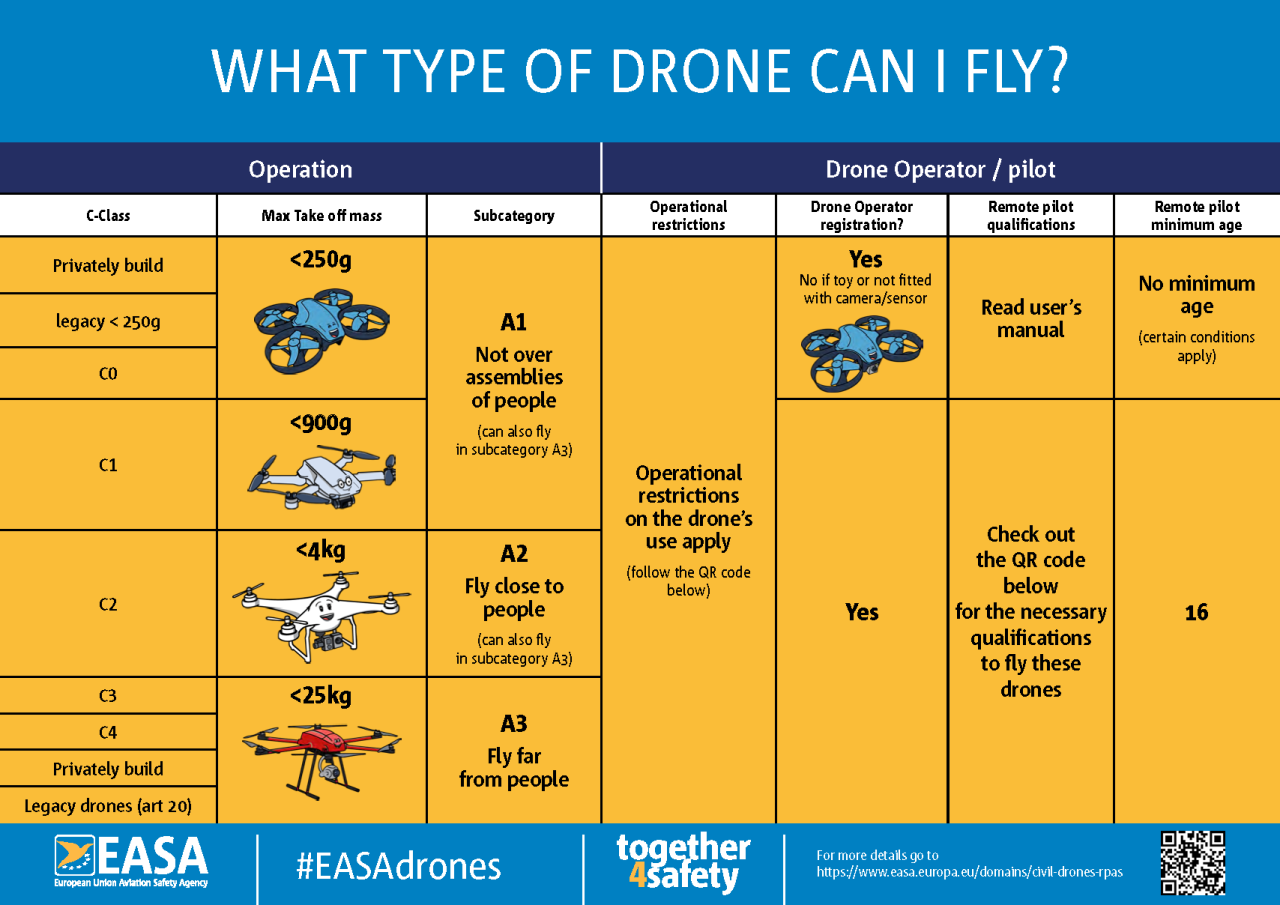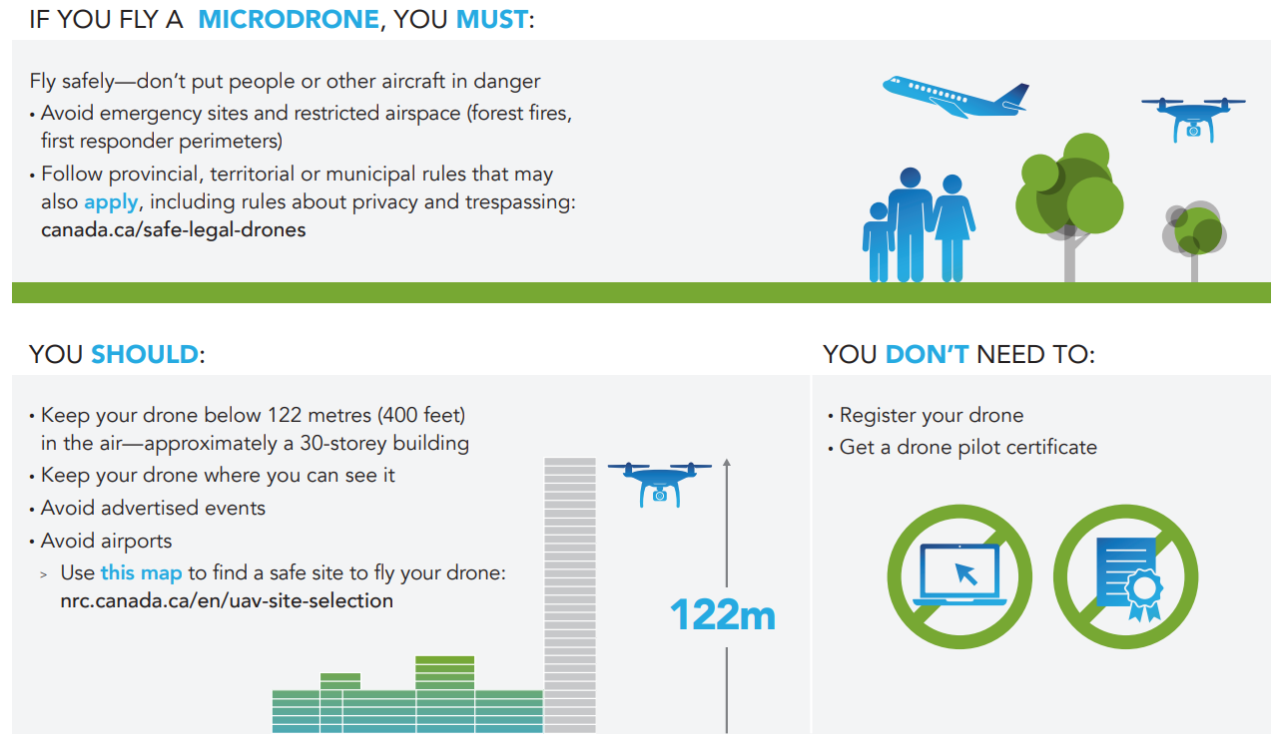New drone rules Canada are changing the game for both recreational and commercial drone pilots. These updated regulations aim to improve safety, protect privacy, and manage the increasingly popular use of drones across the country. Understanding these rules is crucial, whether you’re a seasoned pro or just starting out with your first drone.
From registration and licensing requirements to operational restrictions and airspace limitations, navigating the new landscape can seem daunting. This guide breaks down the key changes, providing clear explanations and practical advice to ensure you’re flying legally and responsibly.
Overview of New Drone Regulations in Canada
Canada’s drone regulations are constantly evolving to keep pace with technological advancements and safety concerns. The key changes reflect a growing need for responsible drone operation, protecting airspace safety, and addressing privacy concerns. These updates build upon previous amendments, creating a more comprehensive and robust regulatory framework.
Key Changes in Updated Drone Regulations
Recent amendments to Canadian drone regulations focus on enhanced registration processes, clearer operational restrictions, and stricter penalties for non-compliance. Significant changes include a more refined classification system for drones based on weight and operational capabilities, leading to varied licensing requirements. The regulations also incorporate increased emphasis on airspace safety near airports and critical infrastructure, along with clearer guidelines on data privacy and responsible data handling.
Rationale Behind the Changes
The rationale behind these changes is rooted in Transport Canada’s commitment to ensuring safe and secure airspace. Government documents, such as Transport Canada’s official website and publications related to drone safety, highlight the increasing number of drone incidents and the need for stronger regulatory measures to mitigate risks. The aim is to balance the benefits of drone technology with the need to protect public safety and privacy.
Timeline of Significant Amendments to Canadian Drone Laws
Tracking the evolution of Canadian drone laws reveals a pattern of progressive tightening of regulations. While a precise year-by-year breakdown requires referencing official government archives, key milestones include the initial introduction of basic drone regulations, followed by subsequent amendments addressing specific safety and privacy concerns. Each amendment reflects a response to emerging challenges and technological advancements in the drone industry.
Drone Registration and Licensing Requirements

Proper registration and licensing are crucial for legal and safe drone operation in Canada. Failure to comply can result in significant penalties. The process involves registering your drone and obtaining the appropriate license based on its weight and intended use.
Drone Registration Process in Canada
Registering your drone in Canada typically involves providing details about the drone and its owner through Transport Canada’s online portal. This process assigns a unique registration number that must be clearly displayed on the drone. The process is designed to be straightforward and accessible to all drone owners.
Types of Drone Licenses and Requirements
Canada employs a tiered licensing system based on drone weight and operational complexity. Basic operation may require only registration, while more complex operations necessitate a pilot certificate. The requirements vary depending on the class of drone and the type of operation. For instance, heavier drones or those used for commercial purposes usually demand more rigorous licensing.
Penalties for Operating a Drone Without Proper Registration or Licensing
Operating a drone without proper registration or licensing in Canada can lead to substantial fines. The penalties can range from several hundred to thousands of dollars, depending on the severity of the violation and any additional safety risks involved. In addition to financial penalties, there may be legal consequences.
Comparison of Drone Classes and Regulations
| Drone Class | Weight Limit | Registration Required | Pilot Licensing Required |
|---|---|---|---|
| Micro | Under 250g | No | No |
| Mini | 250g – 2kg | Yes | No (for recreational use) |
| Standard | 2kg – 25kg | Yes | Yes (for commercial use) |
| Heavy | Over 25kg | Yes | Yes (with advanced certifications) |
Operational Restrictions and Safety Guidelines
Safe and responsible drone operation requires adherence to specific operational restrictions and safety guidelines. These rules are in place to prevent accidents and ensure the safety of others. Understanding and following these rules is essential for all drone pilots.
Restricted Airspace Zones in Canada
Several airspace zones in Canada are restricted for drone operation. These include areas around airports, military bases, and other critical infrastructure. Flying in restricted airspace can lead to serious consequences. Consult official sources like Nav Canada’s website for detailed maps of restricted areas.
Rules Regarding Drone Operation Near Airports, Critical Infrastructure, and Populated Areas
Operating drones near airports, critical infrastructure, and populated areas requires extra caution and adherence to strict regulations. Minimum distances must be maintained, and operations must be conducted in a manner that minimizes risk. Specific rules vary depending on the location and type of operation.
Safety Guidelines for Drone Operation
Safe drone operation requires maintaining visual line of sight, avoiding obstacles, and understanding emergency procedures. Regular pre-flight checks are essential. Always be aware of your surroundings and any potential hazards. In case of emergencies, follow established procedures to ensure safety.
Checklist for Safe Drone Operation
- Check weather conditions
- Verify battery level
- Inspect drone for damage
- Confirm registration and licensing
- Identify and avoid restricted airspace
- Maintain visual line of sight
- Be aware of surroundings
- Follow emergency procedures if necessary
Privacy and Data Protection Concerns
Drones can collect sensitive data, raising important privacy and data protection concerns. Canadian law addresses these concerns through regulations governing the collection, use, and disclosure of data obtained through drone operation. Understanding these regulations is critical for responsible drone operation.
Regulations Concerning Data Collection and Use
The collection and use of data obtained through drone operation are subject to Canadian privacy laws. These laws generally require consent for the collection and use of personal information, and impose restrictions on the disclosure of such information. Specific regulations may apply depending on the purpose of data collection and the type of data collected.
Legal Implications of Unauthorized Drone Surveillance and Data Breaches

Unauthorized drone surveillance can lead to serious legal consequences, including fines and potential criminal charges. Data breaches involving drone-collected data can also result in significant legal liability. Strong security measures are crucial to prevent unauthorized access and data breaches.
Best Practices for Ensuring Privacy Compliance, New drone rules canada
To ensure privacy compliance, obtain consent where necessary, minimize data collection, and implement robust security measures to protect collected data. Clearly communicate the purpose of data collection to individuals affected. Comply with all relevant privacy laws and regulations.
Penalties for Non-Compliance
Violating Canadian drone regulations can result in a range of penalties, depending on the severity of the violation. Understanding these penalties is crucial for responsible drone operation. Transport Canada enforces these regulations and investigates incidents.
So, you’re brushing up on the new drone rules in Canada? It’s good to be informed before you fly! Thinking about impressive drone displays? Check out the amazing spectacle of the shanghai dragon drone show for some serious inspiration. Seeing that might make you appreciate how important those Canadian drone regulations are for safe and responsible flying.
Potential Penalties for Violating Drone Regulations
- Fines
- Suspension of operating privileges
- Seizure of drone
- Criminal charges (in serious cases)
Process for Handling Drone-Related Incidents and Investigations
Transport Canada investigates drone-related incidents to determine if regulations have been violated. Investigations may involve interviews, evidence collection, and analysis of flight data. The process aims to ensure accountability and prevent future incidents.
Severity of Penalties for Different Types of Violations
The severity of penalties varies depending on the nature of the violation. Serious violations, such as operating a drone in restricted airspace or causing an accident, result in more severe penalties than minor violations, such as failing to register a drone.
Okay, so Canada’s got these new drone rules, right? It’s all about safety and responsible flying. To see how other countries are innovating, check out the tech at the china drone show 2026 ; it might give you ideas on how these new Canadian regulations could evolve. Understanding global trends is key to staying ahead of the curve with our own drone laws.
Resources and Further Information
Several resources provide further information on Canadian drone regulations. These resources include official government websites, publications, and training organizations. Consulting these resources ensures compliance and promotes safe drone operation.
Relevant Government Websites and Publications
Transport Canada’s website is the primary source for information on Canadian drone regulations. Their publications offer detailed guidance on various aspects of drone operation. Nav Canada provides information on airspace restrictions.
Contact Information for Enforcing Authorities
Transport Canada is the primary authority responsible for enforcing drone regulations. Their contact information is readily available on their website.
Reputable Organizations Offering Drone Safety Training and Certification
Several organizations offer drone safety training and certification programs. These programs provide valuable knowledge and skills for safe and responsible drone operation. Choosing a reputable organization ensures quality training.
Impact on Different Drone Users
The new drone regulations have varying impacts on recreational and commercial drone users. Understanding these impacts is crucial for adapting to the new regulatory landscape and ensuring continued responsible operation. The impact also varies across different industries utilizing drones.
Impact on Recreational vs. Commercial Drone Users

Recreational drone users face simpler registration requirements compared to commercial operators, who require more extensive licensing and adherence to stricter operational guidelines. The increased emphasis on safety and privacy affects both groups, necessitating greater awareness of regulations.
Impact on Various Industries Using Drones
Industries like agriculture, construction, and photography face both challenges and opportunities. The regulations necessitate adjustments in operational procedures, but also provide a framework for safer and more responsible drone integration, fostering trust and public acceptance.
Future Trends and Developments: New Drone Rules Canada
Canadian drone regulations are likely to evolve further in response to technological advancements and operational experience. Anticipating these trends is important for staying compliant and adapting to a changing regulatory environment.
Anticipated Changes or Updates to Canadian Drone Regulations
Future updates may include further refinements to the drone classification system, incorporating advanced technologies like autonomous flight and drone detection systems into the regulatory framework. These updates will likely focus on enhancing safety and addressing emerging challenges.
Potential Role of Technology in Shaping Future Regulations
Drone detection systems could play a significant role in monitoring airspace and enforcing regulations. Autonomous flight technology may require new safety protocols and regulatory frameworks. The integration of these technologies will likely shape future regulatory changes.
Final Thoughts
Flying drones in Canada responsibly involves understanding and adhering to the updated regulations. While the rules might seem complex at first, prioritizing safety, respecting privacy, and familiarizing yourself with the specifics will ensure a positive and legal drone experience. Remember to check for updates regularly, as drone technology and regulations are constantly evolving.
Frequently Asked Questions
What’s the penalty for flying a drone without registration?
Penalties can include fines and potential legal action. The exact penalty depends on the specific violation.
Can I fly my drone at night?
Night flights are generally restricted unless you have specific exemptions or permissions. Check Transport Canada’s website for details.
Where can I find a list of restricted airspace?
Okay, so Canada’s got new drone rules, right? It’s a bit of a maze to navigate, but knowing the regulations is key. To help you understand the complexities, check out the vip 3 squid game at Drone Fair – it’s a great resource for understanding drone tech and regulations. Getting familiar with these new rules will keep your flights smooth and legal, avoiding any potential headaches later on.
Transport Canada’s website and navigation apps like AirMap provide updated information on restricted airspace in Canada.
Do I need insurance for my drone?
While not always legally mandated for recreational use, insurance is highly recommended to cover potential damages or injuries.
How do I report a drone incident?
Contact Transport Canada or your local authorities to report any incidents involving drones.
